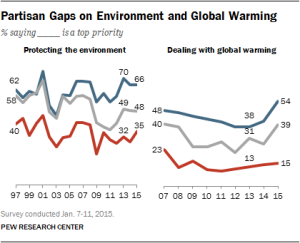

As digital technology becomes an increasingly common part of Americans’ lives, the news media is in a time of transition. Though much has been written on how this transition impacts national media outlets, its impact on local news – where most Americans get their news about government and politics – is far less commonly studied.
Pew Research Center’s new report on local news in a digital age looks at both the organizations providing the news and the residents consuming it. To do so, we focused on three cities of varying size and demographics – Denver, Macon, Ga., and Sioux City, Iowa – and analyzed the local news environment in each. We conducted a representative survey of the residents in each city, and our researchers performed an “audit” of the local news ecosystem, identifying every possible source of news and information in the community, from daily newspapers to government officials to community listservs. For each source that put out original local content at least once a week, we analyzed the local information they generated over five days, whether in legacy forms (such as print or broadcast) or online. (For complete details, see the report’s methodology section.)
Amy Mitchell, the center’s director of journalism research, discussed how we conducted this unique research.
The first question most people will have is: Why these three cities? How were they picked?
These three cities are meant not to be representative of the nation overall, but rather to be detailed case studies that speak to the vast diversity of cities across the U.S., both in terms of city characteristics like size, infrastructure and demographics, and of their local media environments. We wanted to select a large city, a medium-size city and a small city, and we wanted them to be different in terms of demographics, broadband internet penetration, the presence of news providers and geography. Denver falls in the top third (it’s the 17th-largest media market in the U.S., according to Nielsen’s 2013 media market rankings); Macon is in the middle third (it’s the 120th largest); and Sioux City, the 147th largest, is part of the smallest third of markets. You can look at other differences, too: There’s one city from the Mountain West, one from the Southeast and one from the Midwest. Denver has a large Hispanic population, Macon has a large black population and Sioux City is mostly white.
The report uses a combination of methods. Residents in each city were surveyed, but you also did a census of the media outlets and analyzed their content. Why take this approach?
In the past, we’ve looked extensively at what sort of information is available from local news providers and have also, separately, surveyed U.S. adults about their local news habits. In this study, we had the opportunity to look at both together. The surveys let us know how local residents use local news, and what they think about the media and their community. The audit of news sources and the analysis of media content tell us what information is actually available to residents. And the social media analysis provided a look into the role that local news plays in those spaces. Taken together, we have as complete a picture as is possible of the reality of local media in these three cities.
Why study five days’ worth of media content? What can you learn from that?
The high level of human resources needed to conduct a deep content analysis of all at least weekly news providers meant we had to limit the number of days that could be examined. The five day study allows us to analyze the coverage from one outlet to another within a city – in other words, of the news events of the week, the stories and angles covered by the various providers in a city. For example, while Denver TV stations produced 50 stories on the disappearance of a 19-year-old woman, The Denver Post produced just two stories on it. And, in all cities that we studied, citizens were cited more often in news stories than other sources like government or business leaders. At the same time, though, the topic mix over those five days cannot be extrapolated to represent more than those five days, aside from the amount of time local television news devotes to sports, weather and traffic stories, which are standard measures we’ve used before. And topics covered in one city are not compared with topics covered in another.
Who counts as a news provider? In today’s environment with blogs and Twitter, for example, how did you decide to categorize an entity or person as a news provider?
News providers are defined as outlets that, within their offerings, provide news reporting at least once a month. Researchers took several steps to identify the broadest possible universe of local news providers in each of the three cities – including mainstream legacy media, neighborhood and community newspapers, ethnic and alternative media outlets, civic organizations, nonprofits and municipal institutions. Analysts consulted existing lists and databases of news outlets, conducted Web searches with standardized search terms, and contacted experts familiar with the metro areas. Outlets that were primarily listings of entertainment events or sports scores, public relations vehicles, advocacy organizations, local businesses or news aggregators were eliminated. A total of 198 news providers were identified: 143 in Denver, 24 in Macon and 31 in Sioux City.
What do these findings say about the role of local news in these communities?
What we see, first and foremost, is that local news is important to the majority of residents in each of these three cities. That’s the case whether it’s a more transient city like Denver, a more rooted community like Sioux City or a less wealthy city like Macon.
But there are differences, too. The greater digital orientation and array of providers in Denver widen the local news system somewhat with less reliance on the major legacy providers, especially the local newspaper, and a greater mix of coverage more often driven by enterprising work from journalists. The portion of the population finding that enterprising work, though, remains small. Overall interest in local news, meanwhile, is highest in the city with the most limited number of offerings and the lowest level of education and household income. And the greatest level of satisfaction with the role of the news media is expressed in the city with the least diverse population and the greatest connection to those local journalists.
Again, these three cities are not meant to be extrapolated to the nation as whole, but they do indicate the degree to which local factors – from digital infrastructure to economics to civic engagement to race, ethnicity and education – contribute to the mix of providers that emerge, the public that supports them and the ways they interact.
